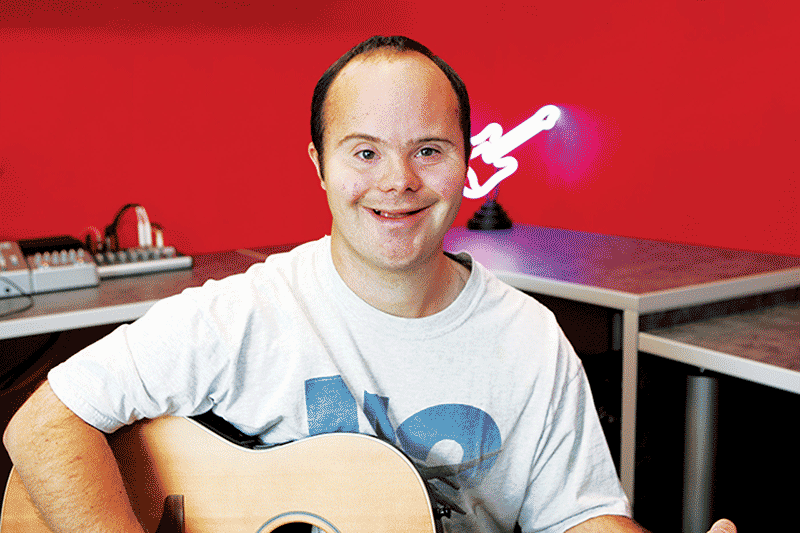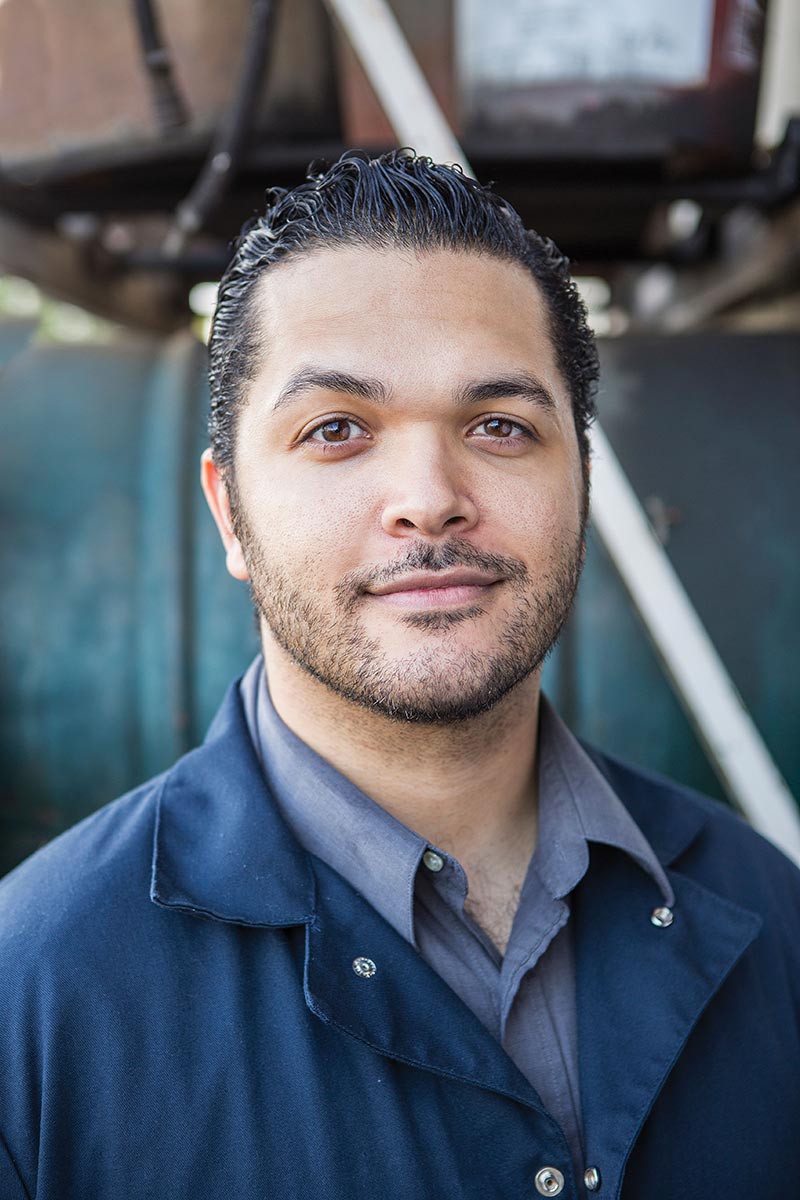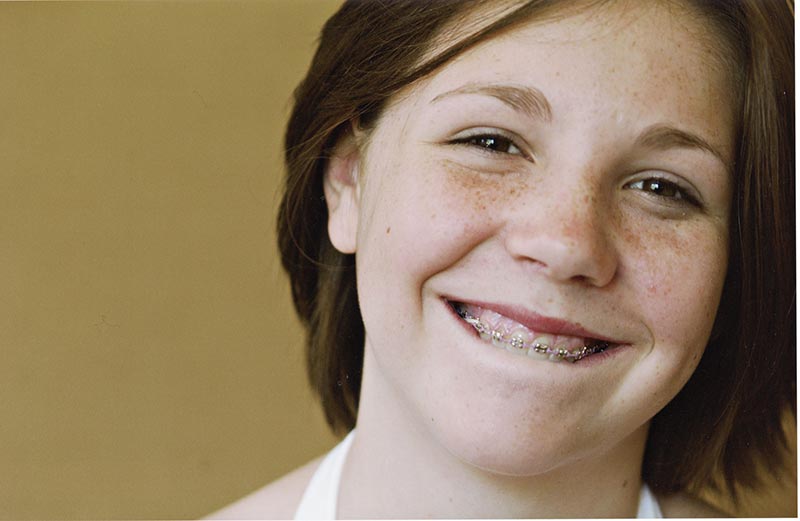Speak Up: Responding to Everyday Bigotry (Abridged Version)
The Southern Poverty Law Center gathered hundreds of stories of everyday bigotry from people across the United States. They told their stories through e-mail, personal interviews and at roundtable discussions in four cities. People spoke about encounters in stores and restaurants, on streets and in schools. No matter the location or relationship, the stories echo each other.
Your brother routinely makes anti-Semitic comments. Your neighbor uses the N-word in casual conversation. Your co-worker ribs you about your Italian surname, asking if you're in the mafia. Your classmate insults something by saying, "That's so gay."
And you stand there, in silence, thinking, "What can I say in response to that?" Or you laugh along, uncomfortably. Or, frustrated or angry, you walk away without saying anything, thinking later, "I should have said something."
People spoke about encounters in stores and restaurants, on streets and in schools. They spoke about family, friends, classmates and co-workers. They told us what they did or didn't say — and what they wished they did or didn't say.
And no matter the location or relationship, the stories echo each other.
When a Native American man at one roundtable discussion spoke of feeling ostracized at work, a Jewish woman nodded in support. When an African American woman told of daily indignities of racism at school, a white man leaned forward and asked what he could do to help. When an elderly lesbian spoke of finally feeling brave enough to wear a rainbow pin in public, those around the table applauded her courage.
‘I’M NOT WEIRD’
Cody Downs, 30, has Down syndrome. He cannot read or write, but he lives on his own, enjoys music and worked as a disc jockey for many years.
Cody and his mother, Kay Parks, were in the checkout line at the grocery store. A woman in line behind them stared at Cody with a disgusted look on her face.
Cody turned to his mother and asked, “Why is that woman looking weird at me?”
Kay looked at the woman, then looked back to Cody.
Stymied for an answer and wanting to provide Cody information he would understand, Kay said to her son, “Well, Cody, I guess she’s looking at you that way because she thinks you’re weird.”
Cody considered that for a moment.
Then he turned to the woman behind him and said, “I’m not weird. I’m a really nice guy.”
Your brother routinely makes anti-Semitic comments. Your neighbor uses the N-word in casual conversation. Your co-worker ribs you about your Italian surname, asking if you’re in the mafia. Your classmate insults something by saying, “That’s so gay.”
And you stand there, in silence, thinking, “What can I say in response to that?” Or you laugh along, uncomfortably. Or, frustrated or angry, you walk away without saying anything, thinking later, “I should have said something.”
No agency or organization counts or tracks these moments. They don’t qualify as hate crimes, and they rarely make news. That’s part of their insidious nature; they happen so often we simply accept them as part of life. Left unchecked, like litter or weeds, they blight the landscape.
In this abridged version of Teaching Tolerance’s award-winning guidebook, we present 10 scenarios designed to help you plan how to respond in these situations. While none may be the exact situation you encounter — whether at home, at work, at school, or in public — each includes tips on how to frame a response in a similar situation.
Once you’re prepared to speak up — when you have a plan and have pledged to yourself that you will speak up — you become one of the voices seeking to replace bigotry with tolerance and understanding. Together, that is how we can change the world.
Leann Johnson, a multiethnic mother of two, made a Kwanzaa presentation at a public holiday gathering. Afterward, while Johnson was taking down the display, a white woman came up and said, “When I first saw you, I didn’t know you were black. You’re so smart and pretty.”
“I had a flight response,” Johnson said. “I thought, ‘Something bad has happened; just leave.’”
So Johnson stepped away.
Then, she said, “Something boiled up from deep inside, years of stuff, of hearing those kinds of remarks. Plus I have two small children, two little girls, my babies, and I have a responsibility to them.”
So Johnson turned, went back to the woman and said, “I don’t know if you know how that sounded, but the way it sounded to me is that you think black people cannot be smart or pretty.”
The woman stammered, started to rationalize her comment, then stopped. Tears welled in her eyes as she said, “Thank you so much. I have really learned something today. I had no idea how that came out, and what you say makes me understand it better.”
Johnson said such moments are rare, but vital.
“It is so important to have at least one win once in a while, one thank you. It makes it that much easier to step out next time, to take a risk and say something.”
‘IT WAS LIKE A GAME TO HIM’
A young Arizona woman says her father and uncle know how much she opposes racist or homophobic “jokes.” “I’ve told them that all the time, and they just keep telling ‘jokes’ to make me mad, to push my buttons and get a reaction. They know I hate it. It used to make me so angry I’d cry and leave the house. Now I just try not to react.”
A Maryland man shares a similar story: “My cousin used to come visit me whenever he was doing business in town. One time he was over and used the N-word, and I said, ‘I don’t use that word,’ but he still used it a few more times. I finally said, ‘Don’t use that word. If you’re going to use that word, I’m going to ask you to find somewhere else to stay.’ It was like a game to him, to use the word to see how I’d react.”
SPEAKING UP
Sometimes people can be persistently manipulative when it comes to bigoted behavior, continuing “jokes” and comments simply to spark a reaction from others. Try the following:
Describe what is happening. Define the offense, and describe the pattern of behavior. “Every time I come over, you tell ‘jokes’ I find offensive. While some people might laugh along with you, I don’t. I’ve asked you not to tell them, but you keep doing it anyway.”
Describe how you are feeling. “I love you so much, and I know you love me, too. I wonder why you choose to keep hurting me with your comments and ‘jokes.’”
Appeal to family ties. “Your ‘jokes’ are putting unnecessary distance between us; I worry they’ll end up doing irreparable harm. I want to make sure those ‘jokes’ don’t damage our relationship.”
State values, set limits. “You know that respect and tolerance are important values in my life, and, while I understand that you have a right to say what you want, I’m asking you to show a little more respect for me by not telling these ‘jokes’ when I’m around.”
Ask for a response. “I don’t want this rift to get worse, and I want us to have a good relationship. What should we do?”
Broaden the discussion. Consider including sympathetic family members — and not-so-sympathetic family members — in the discussion so everyone can work to help the family find common ground.
Put it in writing. If spoken words and actions don’t have an effect, consider writing a note, letter or e-mail. Often, people “hear” things more clearly that way. Avoid an accusatory tone in any written communication, and avoid name-calling. Focus instead on the need to heal and improve family relationships.
‘HOW WOULD HE FEEL?’
At dinner, a woman’s young son tells a racist “joke” he heard on the playground earlier that day. “I immediately discussed with him how inappropriate it was. I asked him to put himself in the place of the person in the ‘joke.’ How would he feel? I discussed with him the feeling of empathy.”
A New Jersey woman writes: “My young daughter wrapped a towel around her head and said she wanted to be a terrorist for Halloween — ‘like that man down the street.’” The man is a Sikh who wears a turban for religious reasons. The woman asks, “What do I tell my daughter?”
SPEAKING UP
Children soak up stereotypes and bigotry from media, from family members, at school, and on the playground. As a parent concerned about your child’s cultural sensitivities, consider the following:
Focus on empathy. When a child says or does something that reflects biases or embraces stereotypes, point it out: “What makes that ‘joke’ funny?” Guide the conversation toward empathy and respect: “How do you think our neighbor would feel if he heard you call him a terrorist?”
Expand horizons. Look critically at how your child defines “normal.” Help to expand the definition: “Our neighbor is a Sikh, not a terrorist. Let’s learn about his religion.” Create opportunities for children to spend time with and learn about people who are different from themselves.
Prepare for the predictable. Every year, Halloween becomes a magnet for stereotypes. Children and adults dress as “psychos” or “bums,” perpetuating biased representations of people with mental illness or people who are homeless. Others wear masks steeped in stereotypical features or misrepresentations. Seek costumes that don’t embrace stereotypes. Have fun on the holiday without turning it into an exercise in bigotry and bias.
Be a role model. If parents treat people unfairly based on differences, children likely will repeat what they see. Be conscious of your own dealings with others.
‘WHAT DO CHINESE PEOPLE THINK?’
A Chinese American woman often finds herself asked by friends, “What do Chinese people think about that?”
A white man plans to marry an East Asian American woman; his friends make incorrect assumptions about her race, religion, and family background. “The question we never stop getting is, ‘Do Carrie’s parents mind?’ When we question the question, we are told that ‘Indian families’ like their daughters to marry their ‘own kind.’ How can we respond?
SPEAKING UP
Friends are our comfort zones, where we let down our guards and can simply be ourselves. Casual conversation is the mainstay of these relationships. But when bias is interjected into everyday moments with friends, relationships can feel markedly uncomfortable. How then can you reconnect?
Approach friends as allies. When a friend makes a hurtful comment or poses an offensive question, it’s easy to shut down, put up walls, or disengage. Remember that you’re friends with this person for a reason; something special brought you together. Drawing on that bond, explain how the comment offended you.
Respond with silence. When a friend poses a question that feels hurtful, let protracted silence do the work for you. Say nothing and wait for the speaker to respond with an open-ended question: “What’s up?” Then describe the comment from your point of view.
Talk about differences. When we have friendships across culture groups, it’s natural to focus on what we have in common, rather than our differences. Yet our differences matter. Strive to open up the conversation: “We’ve been friends for years, and I value our friendship very much. One thing we’ve never really talked about is my experiences with racism. I’d like to do that now.”
‘REPLY ALL’ TO BIGOTRY
Many of us receive unwanted “joke” e-mails or social media posts forwarded by friends or colleagues.
Lesbians and gay men, transgender people, Muslims, Catholics, Jews, people with disabilities, Republicans, Democrats, Independents, people of all races and ethnicities, blondes, redheads, and people who are overweight or underweight: The targets of such “joke” e-mails are innumerable.
“It’s horrible,” writes one man, who says he has changed his e-mail address at least once and not given the new address to those friends who frequently forward such e-mails.
SPEAKING UP
People often forward e-mails and post on social media platforms without critical thought about its content or the people receiving it. And the Internet provides a broad reach — with a click of a button; an e-mail or post can be sent to hundreds of people. Online bigotry can come from people you know, or people you don’t. How can you respond? Try this:
Forward no more. Stop online bigotry at your computer. Don’t forward it; instead, delete it. A simple deletion isn’t the same as speaking up, of course — it does nothing to bring attention to the offense — but it’s a solid first step in breaking the chain.
Reply to sender. Explain that the communication offended you and ask to be removed from any similar post or e-mail in the future. Be sure to explain why — that you find bigoted language offensive that so-called “jokes” are not funny and that stereotypes are unfair, bigoted, and harmful.
Reply to all. Do the same thing, but hit “reply all,” sharing your thoughts with everyone on the list. Others may then follow your example. Imagine the powerful statement that would be made if all recipients responded in this way. If you choose this option, however, be aware that you may get negative replies. You don’t have to respond to the replies, but if you do, use a thoughtful, constructive tone, seeking understanding not combative argument.
‘OFF THEIR MEDS’
A manager writes: “One of my employees constantly makes ‘jokes’ about people being ‘bipolar’ or ‘going postal’ or being ‘off their meds.’ I happen to know that one of our other employees — within earshot of these comments — is on medication for depression. How can I stop the bad behavior without revealing proprietary information?”
“In the teacher’s lounge, a fellow teacher made a joke to the other staff about the band students, referring to them as ‘band fags.’ As a new teacher, I didn’t know what to say.”
An African-American woman, in a staff meeting about budget issues, hears a white co-worker suggest cost-cutting measures for landscaping: “Why don’t we just get the Mexicans to do it?”
An Italian American woman’s co-worker makes daily comments about her heritage. “Are you in the mafia?” “Are you related to the Godfather?” There are only six colleagues in the office, and the Italian American woman doesn’t know how — or if — to respond.
SPEAKING UP
Core value statements and other policies sitting on dusty shelves don’t establish an office’s culture; casual interactions do. Whether you’re a staffer, a manager, or an executive, there’s a role for you to play in setting a respectful and unbiased tone in the office. Consider these actions:
Interrupt early. Workplace culture largely is determined by what is or isn’t allowed to occur. If people are lax in responding to bigotry, then bigotry prevails. Speak up early and often in order to build a more inclusive environment.
Use — or establish — policies. Call upon existing — too often forgotten or ignored —policies to address bigoted language or behavior. Work with your personnel director or human resources department to create new policies and procedures, as needed. Also ask your company to provide anti-bias training.
Go up the ladder. If behavior persists, take your complaints up the management ladder. Find allies in upper management, and call on them to help create and maintain an office environment free of bias and bigotry.
Join together. Like-minded colleagues also may form an alliance and then ask the colleague or supervisor to change his or her tone or behavior.
‘THAT IS SO GAY’
It’s a casual insult heard in schools everywhere: “That’s so gay!”
One teacher says whenever she hears such language in the classroom, she asks, “What was homosexual about it?” Then she uses the moment to discuss the use of slang and derogatory slurs, including racist and sexist language.
SPEAKING UP
Teachers and students across the country report hearing biased language every day: “That’s so lame.” “How retarded.” “That’s so ghetto.” “She’s psycho.” “He’s bipolar.” Here are some ideas to help stem the tide:
Determine the extent of the problem. As a social science or club activity, survey students about biased language at school: what they hear most often, who they hear it from, how it makes them feel, and what they’re willing to do about it.
Implement a “Words Hurt” campaign. Get students, teachers, counselors, and administrators to sponsor an assembly, or a week-long or year-long education campaign, about the damaging effect of hurtful words.
Support student mediators — and use peer pressure. Train students in conflict resolution techniques, and ask them to work with peers to marginalize the use of biased language.
Teach tolerance. When slurs are exchanged in the classroom or teachers’ lounge, interrupt whatever is being discussed and start a new conversation on language, respect, and cultural sensitivity.
‘YOU’RE SO WHITE’
From a 20-year-old African-American college student in South Carolina: “I’ve been called an ‘Oreo’ all my life: ‘Oh, you’re black on the outside, but you’re white on the inside.’ Or, ‘You’re so white.’”
Some Native Americans share stories of being accused of being “too native” by their peers, as do some Latinos who say other Latinos have accused them of being “too ethnic.” Similarly, many gay men and lesbians speak about being perceived as “too feminine” or “too gay” by other gays and lesbians.
SPEAKING UP
We often turn to people within our “groups” to get a break from the daily indignities presented by racism, homophobia, or ethnocentrism. When bigotry comes from those who belong to our own identity groups, it can be especially painful and confusing. Try these responses:
Affirm your pride. “I’m proud to be African American, always have been, always will be.”
Respond with questions. Challenge in-group stereotypes the same way you would cross-group stereotypes: “What does that mean — ‘too’ ethnic? I don’t understand what you mean.”
Get to the root of it. Many in-group slights are actually extensions of racist and sexist stereotypes. Point out that accusations of being “too feminine or “too gay” support and promote misogyny and homophobia. Anything that hurts or marginalizes one member of a group hurts or marginalizes all members of that group.
‘I JUST STOOD NEXT TO HIM’
In Washington State, a white woman is in a doctor’s waiting room when she notices a Muslim woman wearing a hijab being ignored by the receptionist at the front counter. The woman stands up and joins the woman at the counter: “I just stood next to her and wouldn’t leave until the receptionist finally helped her.”
An Asian-American man in the grocery store notices a cashier treating a non-English-speaking woman badly. After checking to see if the woman wants help, the man confronts the manager: “This person spends money in your store, and your store has a responsibility to respect all people living in this community.”
A Colorado woman uses a wheelchair. She is boarding a plane with her husband when the flight attendant says, to the husband, “Will she need help being seated?” The husband told the flight attendant to ask his wife.
SPEAKING UP
It’s all too common: front line employees who are ill-trained to deal with diverse clientele. Most of us don’t relish the thought of causing a scene, but interrupting biased customer service can send a clear message to the employees — and to other customers. When bias affects customer service, consider the following:
Speak for yourself. If you’re the target of rude customer service, let the person know: “I deserve to be treated with respect in an establishment where I spend money.” ”
Make eye contact. Look at other people witnessing this exchange. Use body language to appeal for their assistance and support.
Step up. Don’t allow someone to be mistreated when you have the power to help. Don’t stick solely to “your” issues. Speak up against bigotry wherever it happens, whoever is involved.
‘I THOUGHT THOSE DECADES WERE GONE’
An 18-year-old Hispanic woman goes to a Florida craft store to spend her birthday money. A manager follows her and asks repeatedly what she is looking for. Other customers, all white, are browsing without being asked such questions. When she protests, she is asked to leave. “I thought those decades were gone, when they could throw you out of a store just because you’re Hispanic.”
A woman in Indiana notices store clerks shadowing two teen shoppers, taking items out of the shoppers’ hands and replacing them on the racks, then standing by the dressing room door when one of the young men tries on a garment.
A Middle Eastern American man is shopping in a major department store in Iowa. A young sales clerk follows him closely but doesn’t speak to him. When he moves, she moves; when he stands still, she stands still. The man considers confronting her but notices her returning to speak to her manager, an older white man.
SPEAKING UP
When you shop, you may get something besides the items you were looking for: retail racism, in the form of racial or ethnic profiling; teens and other young people also often are targeted. When store security or other personnel shadow your every move, or when you see them tailing another customer, interrupt the behavior. Try this:
Find the source. The clerk may simply be following store policy. Ask why the clerk or security officer is following you (or someone else). Ask to see the written policies on discrimination. Share your experience and observations with company officials.
Stage a personal public protest. Go to the customer service desk or checkout counter. Cancel your store purchase on the spot, and say why you’re doing so — loud enough for others to hear. Ask for the manager and tell that person the store has lost your business.
Tell others. Let friends and family know what you observed or experienced. Encourage them to refrain from shopping at a store that practices racial profiling or to contact the store to ask about such policies and practices.
‘I WAS SHOCKED’
A white woman is apartment-hunting with her mother. They are in a restaurant, making friendly conversation with people at another table. Her mother asks which neighborhoods are good for students. The man at the other table says, “Pretty much all of the neighborhoods in town are fine; we try to keep the niggers and Mexicans out of the city limits.”
She says, “I was shocked and didn’t know what to do. How do you confront a stranger in a restaurant? Or do you? I’ll never forget the shock and anger I felt at that moment.”
A gay man in Oregon writes about walking down a street the day after a local Gay Pride event. On the sidewalk, he passes a man who tells a female companion, loudly, “There were fags all over the place. I felt like killing them.”
A lesbian who at the time was dating a transgender woman shares a similar story of being called “dykes” by someone from across the street. A gay man tells of routinely being called “faggot” while walking down city streets.
SPEAKING UP
When people we don’t know dish out bigotry, it can leave us at a loss for words — and challenge our sense of safety. Try taking these steps:
Consider your safety. A heated exchange with a stranger can escalate into physical violence; assess the situation before you respond. Is the speaker with a group of people? Is the space deserted? Are you alone? Are children present? Always consider your safety and the safety of others before responding.
Say nothing. A questioning glance may be an effective and no confrontational response in a situation in which you feel unsafe speaking directly.
Say something. If you choose to raise the issue, state your beliefs clearly: “I find that language very bigoted. It offends me.” Or, “I think it’s wrong to stereotype people.”
Speak to the proprietor. If the incident happens in a business, leave. But before you walk out, let the managers know why you’re leaving: “The man at the table next to mine kept using the N-word. It made me lose my appetite. Perhaps you should speak to him so you don’t lose more business.”
Report the incident to an advocacy group. Local advocacy groups, like gay and lesbian centers and local cultural centers, often keep check on the pulse of a community. Call them; let them know what you heard, when, and where. They may see patterns you don’t and can work with local government to address ongoing concerns.
Whatever situation you’re in, remember these six steps to help you speak up against everyday bigotry. In any situation, however, assess your safety, both physical and emotional. There is a risk, and that must be acknowledged as you make your own choice to speak up.
BE READY
You know another moment like this will happen, so prepare yourself for it. Think of yourself as the one who will speak up. Promise yourself not to remain silent.
“Summon your courage, whatever it takes to get that courage, wherever that source of courage is for you,” said Dr. Marsha Houston, former chair of the Communication Studies Department at the University of Alabama.
To bolster that courage, have something to say in mind before an incident happens. Open-ended questions often are a good response. “Why do you say that?” “How did you develop that belief?”
IDENTIFY THE BEHAVIOR
Sometimes, pointing out the behavior candidly helps someone hear what they’re really saying: “Janice, what I hear you saying is that all Muslims are terrorists” (or whatever the slur happens to be). Or, “Janice, you’re classifying an entire religious group in a derogatory way. Is that what I hear you saying?”
When identifying behavior, however, avoid labeling, name-calling, or the use of loaded terms. Describe the behavior; don’t label the person.
“If your goal is to communicate, loaded terms get you nowhere,” said Dr. K.E. Supriya, an expert in the role of gender and cultural identity in communication. “If you simply call someone a racist, a wall goes up.”
APPEAL TO PRINCIPLES
If the speaker is someone you have a relationship with — a sister, friend, or co-worker, for example — call on their higher principles: “Bob, I’ve always thought of you as a fair-minded person, so it shocks me when I hear you say something that sounds so bigoted.”
“Appeal to their better instincts,” Houston said. “Remember that people are complex. What they say in one moment is not necessarily an indication of everything they think.”
SET LIMITS
You cannot control another person, but you can say, “Don’t tell racist jokes in my presence anymore. If you do, I will leave.” Or, “My workspace is not a place I allow bigoted remarks to be made. I can’t control what you say outside of this space, but here I ask that you respect my wishes.” Then follow through.
“The point is to draw a line, to say, ‘I don’t want you to use that language when I’m around,’” Bob Carolla, spokesman for the National Alliance for the Mentally Ill. “Even if attitudes don’t change, by shutting off bad behavior, you are limiting its contagion. Fewer people hear it or experience it.”
FIND AN ALLY/BE AN ALLY
When frustrated in your own campaign against everyday bigotry, seek out likeminded people and ask them to support you in whatever ways they can.
And don’t forget to return the favor: If you aren’t the first voice to speak up against everyday bigotry, is the next voice.
“Always speak up, and never be silenced out of fear,” said Shane Windmeyer, founder and coordinator of Campus PrideNet and the Lambda 10 Project. “To be an ally, we must lead by example and inspire others to do the same.”
BE VIGILANT
Remember: Change happens slowly. People make small steps, typically, not large ones. Stays prepared, and keep speaking up. Don’t risk silence. “There’s a sense of personal disappointment in having not said something when you felt you should have,” said Ron Schlittler, program coordinator at the American Psychological Association; LGBT Concern Office.
Carolla put it this way: “If you don’t speak up, you’re surrendering part of yourself. You’re letting bigotry win.”
With That In Mind, Consider Taking The Speak Up! Pledge …
Commit to respond to everyday bias and bigotry. Sign this pledge and place it in your wallet, book bag, desk drawer, or post it on your wall. Share pledge cards with friends and family, classmates, co-workers, and others, making as many photocopies as you need. Post the pledge in public places, encouraging others to join. Because what we say matters.
I PLEDGE TO SPEAK UP!
In pledging to respond to everyday bigotry, I will:
-
Speak up when I hear or see bigotry;
-
Question and identify bias when I see it;
-
Be mindful of my own behaviors;
-
Promote and appeal to higher principles;
-
Set limits on what is said or done around me;
-
Seek help and help others to work against bigotry; and
-
Remain vigilant and persistent.
Special thanks to the following organizations and individuals: In Baltimore, Maryland Alex O. Boulton, Jane Brown, Lawrence Egbert, Nancy Geyer, Francis W. Green, Stephen Green, Stan Markowitz, John Morris, Jacqueline Robarge, Richard A. Rowe, Charlotte Walters, and the members of Interfaith Action for Racial Justice
In Columbia, South Carolina Marion Aldridge, Bonita D. Clemons, Tod Ewing, Perry W. James, Teresa Holland, Christina McCormick, Linda McLeod, Bettie N. Toney, and the staff and supporters of The Palmetto Project
In Phoenix, Arizona Dr. N. Burton Attico, Rory Gilbert, Annie Goldsand, Larry Robinson, Jessie Leah Koppell Rubenstein, R.J. Shannon, Ron R. Williams, and the National Conference for Community and Justice, Arizona Region
In Vancouver, Washington Judi Bailey, Sidney Clark, Louise Debreczeny, Earl W. Ford, Gina Hoggan, Leann Johnson, Debbie Nelson, Kay Parks, Valerie Thompson, and the City of Vancouver’s Diversity Project
Experts and Advocacy Groups Kiran Ahuja (National Asian Pacific American Women’s Forum), Bob Carolla (National Alliance for the Mentally Ill), T.C. Duong (Southeast Asian American Advocacy Initiative), Dr. Marsha Houston (University of Alabama), Angela Oh (civil rights attorney, speaker, author), Ron Schlittler (American Psychological Association), Dr. K.E. Supriya, and Shane Windmeyer (Campus PrideNet and Lambda 10 Project)
And the hundreds of people who shared their stories with us by e-mail, letters, phone calls, and personal interviews.
© 2014 Southern Poverty Law Center. Fifth Printing of Abridged Edition. This publication was produced by Teaching Tolerance, a project of the Southern Poverty Law Center.
Photo Credits JGI/Jamie Grill/Blend (cover); DreamPictures/Blend (page 15); Jed Share/Kaoru Share/Blend via Getty Images (page 9); Cultura/ Masterfile (page 10); Sam Dephius/Blend (page 18, inside back cover); Hill Street Studios/Blend (back cover); all other photos, Ibid Photos
Southern Poverty Law Center
Board of Directors
Alan B. Howard, Chair
Henry L. Solano, Vice Chair
Bryan Fair
Marsha Levick
William Little
James McElroy
Lida Orzeck
Elden Rosenthal
James Rucker
Ellen Sudow
Julian Bond, emeritus
Patricia Clark, emeritus
Joseph J. Levin, Jr., emeritus
Written by Brian Willoughby
Project Manager Wendy Via
Editor Lecia Brooks
Design Director Russell Estes
Designer Sunny Paulk
“There may be times when we are powerless to prevent injustice, but there must never be a time when we fail to protest.” —Elie Wiesel
Teaching Tolerance offers a variety of online resources aimed at identifying and eliminating racist, sexist, biased, and bigoted language and imagery from our lives. Use the links below or go to tolerance.org for more options.
Beyond the Golden Rule: A Parent’s Guide to Preventing & Responding to Prejudice
This book is designed to help you teach your children to honor the differences in themselves and in others — and to reject prejudice and intolerance.
Responding to Hate and Bias
This guide helps educators respond to hate related incidents and steers them through crisis management and post-crisis efforts at improvement.
Speak Up at School
tolerance.org/speak-up-at-school
This guide presents tools to help students and educators respond to biased remarks from peers, parents or even administrators.














